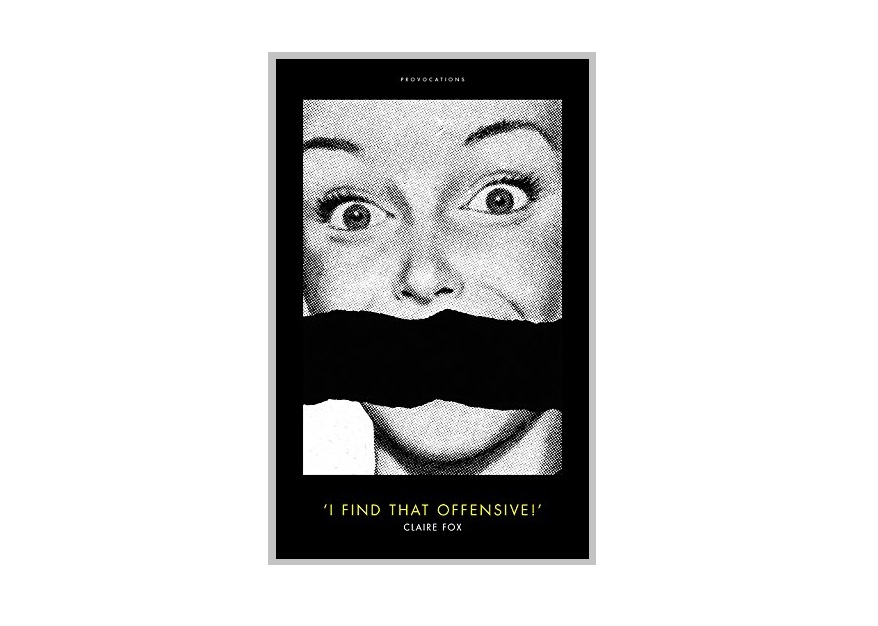When faced with the mewling and puking of campus Social Justice Warriors about hate speech, tone, safe spaces, micro-aggressions, and trigger warnings, the temptation for those who value free speech, vigorous argument, and the right to dissent is to exclaim like the Pharisees, “I thank you, Lord, that I am not like others, especially these representatives of ‘Generation Snowflake’ over there!” Yet that response, attractive as it is, is problematic, because it fails to see that the current chaos in higher education is simply one part of a set of wider problems of which we are all a part.
This is why Claire Fox’s book “I Find That Offensive!” is such a signally helpful volume, for she eschews cheap criticism targeted at the thinness of the students’ skins and the triviality of some of their causes by looking rather at the world that has produced them. Though it is excellent, it makes for depressing reading. If Fox is right, what we have witnessed over recent years is not simply the routine generational rebellion of immature students but a symptom—and perhaps even a structural part—of Western society as it now exists.
Fox is a British writer, the founder and director of the Institute of Ideas, an organization committed to providing forums where ideas can be debated and contested without restraint. While she draws significantly (though not exclusively) on British examples in order to make her case, there are so many parallels and affinities with the situation in the United States that American readers will find themselves resonating with both the narrative and the analysis. Generation Snowflake is the monopoly of no Western nation but part of the pathology of the contemporary West as a whole.
Fox’s basic thesis is this: the fear of free speech on university campuses and the concomitant culture of “safe spaces” is one result of a nexus of social, educational, and philosophical factors that have been transforming society since the 1970s. The primary responsibility for our current problems thus lies with people over forty, not with the students themselves. The problem is deeper and more significant than we might at first imagine. It is not simply the typical youth rebellion one expects on campuses but a sign of more notable changes in society as a whole.
Start your day with Public Discourse
Sign up and get our daily essays sent straight to your inbox.A Culture of Catastrophe
There are two basic parts to the analysis. The first is the development of what I would dub a culture of catastrophe. Fox argues that today’s children have been raised to fear. Ironically, we in the West probably enjoy greater degrees of physical comfort and safety than did any previous generation in history. Our children should be enjoying the psychological security that comes with this reality. But that which grips our social imagination is not necessarily that which actually reflects social reality. Fear and insecurity are the order of the day in the West, and this is shaping the character of rising generations.
We might posit various causes for this lack of security. Fox notes public health scares, child protection strategies, anti-bullying campaigns, and the transference of the previously adult conceptual vocabulary of stress and neuroses to children. To this, I myself would add the need for news reporting always to be sensational, thus bringing the scariest problems of the most dangerous parts of the world into the living rooms of the safest houses on the planet. As Fox notes, behind each of these culprits there are commercial interests and lobby groups. These may not have caused the problems, but they certainly have reasons to universalize, exaggerate, and perpetuate them.
Underlying this culture of catastrophe is the shift toward placing psychological categories at the heart of what it means to be a human. This move places “existential”—we might even say “merely linguistic”—threats on a par with or even above physical ones. We see this all around us in the way that the use of certain words can have a far more devastating impact on someone’s career than, say, crimes against property.
The ethical framework that has made hate speech such a comparatively heinous crime depends on an understanding of personhood that prioritizes individual psychology in a way unprecedented in history. In this world, bullying is both broadened in definition and made far more devastating. Fox singles out anti-bullying programs for particular excoriation. Like other lobby groups, the anti-bullying industry has a vested interest in expanding the definition of behaviors that constitute bullying and exaggerating the impact of what bullying does to people in the long term. In a world where victimhood carries considerable cachet, this has proven both persuasive and attractive.
The Transformation of Educational Institutions
The second part of Fox’s analysis is directly connected to the first: the transformation of educational institutions. As the culture of catastrophe has come to grip the social imagination, so education has evolved from seeing teacher and student as “authority” and “learner” to seeing them as “service provider” and “consumer.” This change has been reinforced by other factors. High fees for education have fostered a consumerist mindset, and the general reconstruction of notions of authority in society as a whole has inevitably pushed the teacher-student relationship in a direction that negates or even inverts the traditional hierarchy.
This change in educational culture has manifested itself in numerous ways. Consider the growing power of student voices in shaping institutional policies on curriculum design and content, as well as the hiring and firing of teaching staff. The fact that this plays a role in high schools means that it is part of the cultural expectation when students arrive at universities and colleges. By the time students matriculate, the attitudes and expectations that drive Generation Snowflake are already well entrenched.
Fox argues that when you bring this model of education together with the world of psychologized fear and oppression that my generation has manufactured, the scene is set for institutions of learning to become “safe places.” Rather than being contexts for the exploration of dangerous ideas, they become an extension of the safety of home, where the goal is to continue to protect the child from alien influences. Indeed, she cites numerous examples of “home away from home” language that now pervades descriptions of what universities are meant to be.
Yet Fox also points to what would appear at first glance to be an anomaly in the current climate: Generation Snowflakers are simultaneously terrified of the mere existence of views with which they disagree yet supremely confident in their own correctness. Fox, however, sees this again as a consistent outworking of the wider cultural patterns. This is a generation that has been protected, coddled, and constantly told that it is the center of the universe, much greater and wiser than any alternatives. No wonder it combines thin skin with unprecedented levels of hubris.
I agree with her on this point, but I would add that the anger and aggression being used to silence dissenting voices might also speak of intellectual and moral insecurity. Those who are secure in their convictions have no fear of discussing alternative views, because they are confident either that their position will prevail or that they will come to a deeper understanding. Could it be that Generation Snowflake is not convinced of the truth of its positions? Or perhaps Generation Snowflake simply understands the implications of Western society’s commitment to relativism: the idea that truth is ultimately the preserve of the loudest and most aggressive voices.
Moving Forward: Seeking a Shared Understanding of Personhood
Fox does not end with simply analyzing the problems. In a final chapter, she directly addresses both Generation Snowflake and those who attack it, appealing for calm and reason in discussions as we move forward. Her appeal is moving and forthright, yet it is perhaps the weakest part of the book. It’s not that what she says does not make sense—it most certainly does—but that it underestimates the depth of the problem.
Fox’s call to both sides is valiant, but it seems to ignore the complexity of the origins of the problems as she herself describes them. Forms of life are always more than just the sum of the metaphysical ideas upon which they rest or that they embody. But they are not less than that. What is missing from modern society is something that provides a framework or a foundation on which civil discourse can be built. Thus Fox’s appeal presupposes what she has already demonstrated to be lacking: a common basis between the two sides on which such an appeal can be made.
From the catastrophizing of comparative trivia to the campus chaos of trigger warnings and safe spaces, the problem we face is a metaphysical one. Ultimately, it is a question of what it means to be human. Our society lacks a coherent shared answer to this question, and its absence affects public conflicts over everything from marriage to education. It also means that any solution to our current problems—or even the simple recognition of our current situation as problematic—is going to be complicated. Perhaps it is too complicated ever to be solved.
The loss of a coherent metaphysics of personhood has numerous causes, many of which are startlingly material and un-metaphysical. The entertainment industry, for example, projects nonsensical views of human life into every home, making them aesthetically attractive and thus persuasive. The institutions that should be at the heart of such a recovery—the family, schools, universities—are the very things that have been the objects of contention in the public square. They have been either plunged into incoherence or made into instruments of the metaphysical revisionism whose fruits we now see all around us. As a result, they do not provide the foundations on which a solution can be worked out; instead, they are themselves part of the means by which the problem is perpetuated.
Fox’s book is a well-written, important, even brilliant contribution toward understanding the significance of current campus conflicts for society as a whole. Sadly, the picture she paints is bleaker than she herself ultimately realizes. Appealing for calm and self-critical reflection only works if such things are valued in the first place.














